Related Research Articles

The following outline is provided as an overview of and topical guide to theatre:

A striptease is an erotic or exotic dance in which the performer gradually undresses, either partly or completely, in a seductive and sexually suggestive manner. The person who performs a striptease is commonly known as a "stripper" or an "exotic" or "burlesque" dancer.

A proscenium is the metaphorical vertical plane of space in a theatre, usually surrounded on the top and sides by a physical proscenium arch and on the bottom by the stage floor itself, which serves as the frame into which the audience observes from a more or less unified angle the events taking place upon the stage during a theatrical performance. The concept of the fourth wall of the theatre stage space that faces the audience is essentially the same.
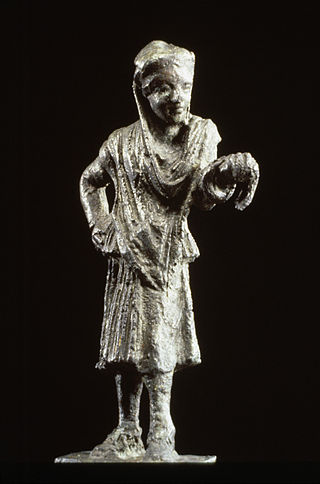
A theatrical culture flourished in ancient Greece from 700 BC. At its centre was the city-state of Athens, which became a significant cultural, political, and religious place during this period, and the theatre was institutionalised there as part of a festival called the Dionysia, which honoured the god Dionysus. Tragedy, comedy, and the satyr play were the three dramatic genres emerged there. Athens exported the festival to its numerous colonies. Modern Western theatre comes, in large measure, from the theatre of ancient Greece, from which it borrows technical terminology, classification into genres, and many of its themes, stock characters, and plot elements.
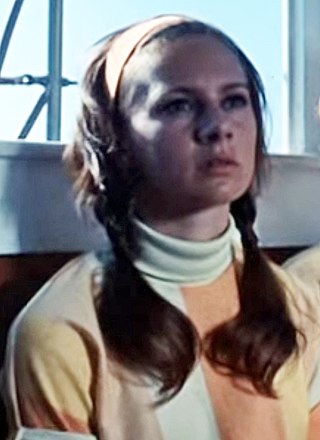
Francesca Annis is an English actress. She is known for television roles in Reckless (1998), Wives and Daughters (1999), Deceit (2000), and Cranford (2007). A six-time BAFTA TV Award nominee, she won the 1979 BAFTA TV Award for Best Actress for the ITV serial Lillie. Her film appearances include Krull (1983), Dune (1984), The Debt Collector (1999), and The Libertine (2004).
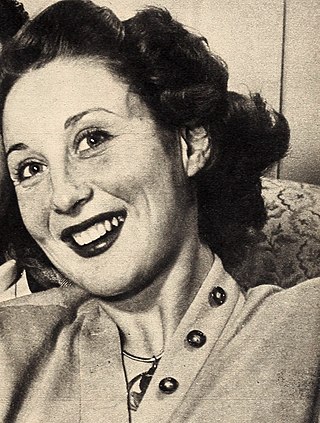
Betty Garrett was an American actress, comedian, singer and dancer. She originally performed on Broadway, and was then signed to a film contract with Metro-Goldwyn-Mayer. She appeared in several musical films, then returned to Broadway and made guest appearances on several television series.
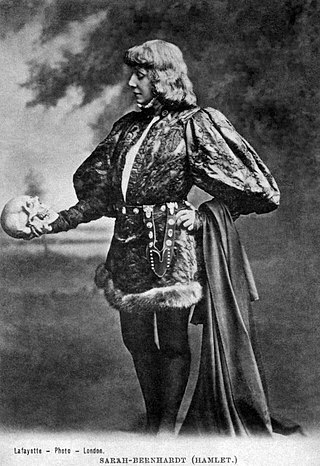
Travesti is a theatrical character in an opera, play, or ballet performed by a performer of the opposite sex.

Pantomime is a type of musical comedy stage production designed for family entertainment. It was developed in England and is performed throughout the United Kingdom, Ireland and in other English-speaking countries, especially during the Christmas and New Year season. Modern pantomime includes songs, gags, slapstick comedy and dancing. It generally combines gender-crossing actors and topical humour with a story more or less based on a well-known fairy tale, fable or folk tale. Pantomime is a participatory form of theatre, in which the audience is encouraged and expected to sing along with certain parts of the music and shout out phrases to the performers.

Ida Lvovna Rubinstein was a dancer, actress, art patron and Belle Époque figure from the Russian Empire. She performed with Diaghilev's Ballets Russes from 1909 to 1911 and later formed her own company. Boléro by Ravel (1928) was among her commissions.

Indira Anne Varma is a British actress and narrator. Her film debut and first major role was in Kama Sutra: A Tale of Love.

The music of ancient Rome was a part of Roman culture from the earliest of times. Songs (carmen) were an integral part of almost every social occasion. The Secular Ode of Horace, for instance, was commissioned by Augustus and performed by a mixed children's choir at the Secular Games in 17 BC. Music was customary at funerals, and the tibia, a woodwind instrument, was played at sacrifices to ward off ill influences. Under the influence of ancient Greek theory, music was thought to reflect the orderliness of the cosmos, and was associated particularly with mathematics and knowledge.

The architectural form of theatre in Rome has been linked to later, more well-known examples from the 1st century BC to the 3rd Century AD. The theatre of ancient Rome referred to a period of time in which theatrical practice and performance took place in Rome. The tradition has been linked back even further to the 4th century BC, following the state’s transition from monarchy to republic. Theatre during this era is generally separated into genres of tragedy and comedy, which are represented by a particular style of architecture and stage play, and conveyed to an audience purely as a form of entertainment and control. When it came to the audience, Romans favored entertainment and performance over tragedy and drama, displaying a more modern form of theatre that is still used in contemporary times.

An actor or actress is a person who portrays a character in a production. The actor performs "in the flesh" in the traditional medium of the theatre or in modern media such as film, radio, and television. The analogous Greek term is ὑποκριτής (hupokritḗs), literally "one who answers". The actor's interpretation of a role—the art of acting—pertains to the role played, whether based on a real person or fictional character. This can also be considered an "actor's role", which was called this due to scrolls being used in the theaters. Interpretation occurs even when the actor is "playing themselves", as in some forms of experimental performance art.

The history of theatre charts the development of theatre over the past 2,500 years. While performative elements are present in every society, it is customary to acknowledge a distinction between theatre as an art form and entertainment, and theatrical or performative elements in other activities. The history of theatre is primarily concerned with the origin and subsequent development of the theatre as an autonomous activity. Since classical Athens in the 5th century BC, vibrant traditions of theatre have flourished in cultures across the world.
The Armenian Theater dates to before Roman times and is one of the oldest Eurasian theatrical traditions. Alongside Greek and Roman theatres, it stands as one of the world's most ancient theatres. The ancient and beloved form of theatrical art is lyrical (profound) drama, which exerted its influence on the folklore of the Near East, Balkan, and Apennine peoples. Within this cultural context, Armenian folk and mystical drama, characterized by its dance elements, also took shape. Although the ancient theatre system hasn't been preserved, it has left its linguistic marks.
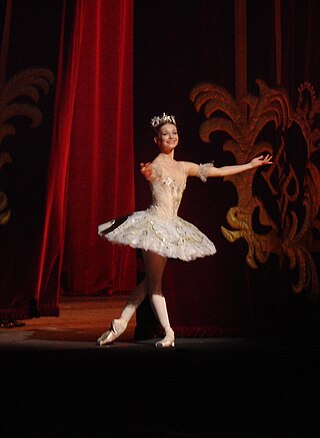
Evgenia Viktorovna Obraztsova is a Russian ballerina. She is a prima ballerina with the Bolshoi Ballet in Moscow, and with the Mariinsky Ballet.
Galeria Copiola was an ancient Roman dancer (emboliaria) and actress whom Pliny includes in a list of notable female nonagenarians and centenarians in his Natural History. Because of Pliny's notice, Galeria is one of the few performing artists in classical antiquity whose career milestones can be precisely dated.

Laine Mägi is an Estonian stage, film and television actress, dancer and choreographer and dance pedagogue who began her career as a teenager. She is the founder of the Laine Mägi School of Dance, based in Pärnu.
Licinia Eucharis was an adolescent Ancient Roman stage actress, who died at the age of 14. According to the epitaph on her tomb, which was written by her father, she was a star of the Theatre of ancient Rome. She is one of the few ancient actresses known to have achieved fame and respect in her profession during the Roman Republic.
Bassilla, was a mime actress in Ancient Rome.
References
- ↑ Gregori, Gian Luca (2005). "I protagonisti della scena teatrale nella documentazione epigrafica di Roma". Scienze dell'Antichità: 12, 2004/2005: 575–590.
- ↑ Christer Bruun, J. C. Edmondson: The Oxford Handbook of Roman Epigraphy
- ↑ García Morcillo, Marta; Richardson, James H.; Santangelo, Federico (2016). Ruin or Renewal?: Places and the Transformation of Memory in the City of Rome.
- ↑ Pat Easterling, Edith Hall: Greek and Roman Actors: Aspects of an Ancient Profession